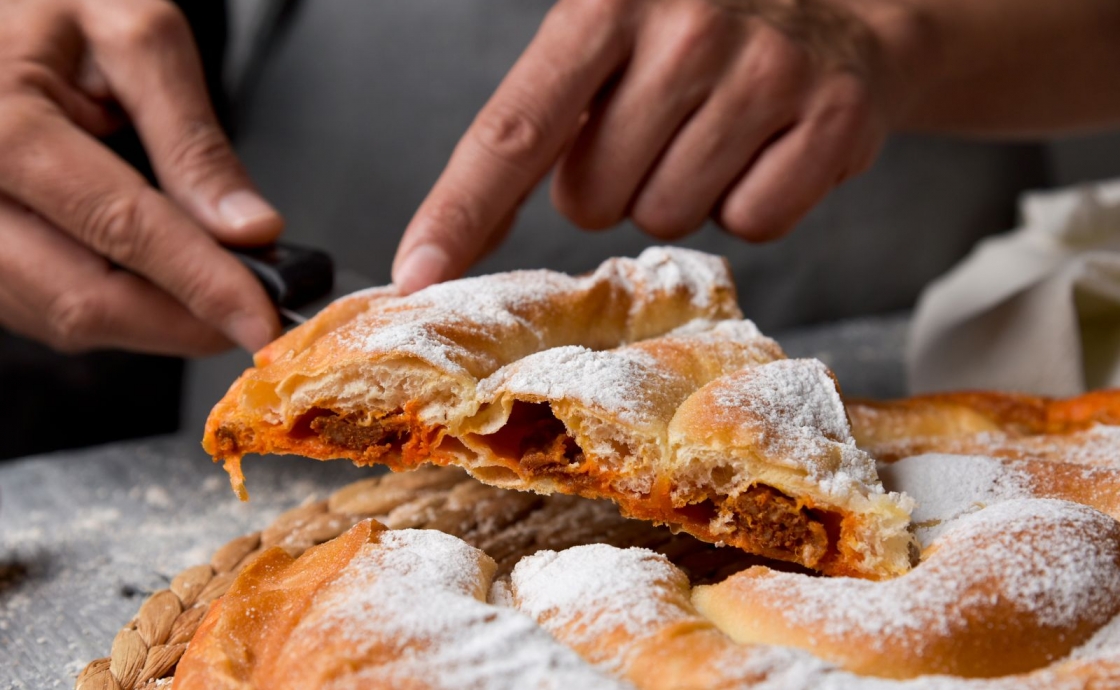
Do You Know These Typical Sweets from Mallorcan Pastry?
Mallorcan pastry holds a very special place within the island’s culinary traditions. It’s not just a dessert or sweet treat enjoyed complementing breakfast or a snack; it’s also a reflection of the island’s history, culture, and local products. Within these pastries, you can glimpse the influence of Muslim tradition, Jewish confectionery, and predominant traits of Greek cuisine.
The Main Ingredients of Mallorcan Pastry
Mallorcan pastry is characterized by its simplicity and the use of high-quality, native ingredients. Nuts, especially almonds, are a fundamental component in many of its creations. This is no coincidence, as Mallorca has historically been an important producer of almonds, with vast almond fields that bloom spectacularly every spring.
Another star ingredient is sobrassada, a typical Mallorcan cured sausage that, surprisingly, also finds its place in pastry. Its unique flavor and creamy texture add a distinctive touch to certain traditional desserts.
The Main Sweets of Mallorcan Pastry
One of the island’s most iconic sweets is the ensaimada, undoubtedly the flagship of Mallorcan pastry. This spiral-shaped bun, made from bread dough, lard, and sugar, is internationally renowned and has been granted Protected Geographical Indication status. Its origin dates to the 17th century, and its name comes from the Catalan word “saïm,” which means lard. The ensaimada can be enjoyed plain or filled with various ingredients such as cream, “cabello de ángel” (pumpkin jam), or even sobrassada.
Another typical dessert is gató d'ametlla, a fluffy cake made primarily from ground almonds, eggs, and sugar. This medieval-origin cake is a perfect example of the importance of almonds in Mallorcan pastry. It is often served with almond ice cream or a generous portion of whipped cream.
Cocas mallorquinas (Mallorcan cakes) also deserve a special mention. These flat cakes can be either sweet or savory, but in the realm of pastry, the coca de patata and coca de cuarto stand out. The first is a fluffy cake made with boiled potato and starch, while the latter is a dry and crunchy cake, perfect to accompany coffee or tea.
We can’t forget about crespells, traditional star- or flower-shaped cookies that are specially made during Easter. Their crispy texture and light lemon flavor make them an irresistible treat.
Rubiols are another Easter delicacy. These are sweet turnovers filled with various ingredients such as “cabello de ángel,” cream, or jam. Their crumbly pastry and juicy filling create the perfect combination.
For chocolate lovers, Mallorca offers the delicious teulas, thin and crispy cookies made with almonds and covered in dark chocolate. Their name comes from their wavy shape, which resembles the tiles of traditional Mallorcan houses.
Mallorcan pastry also includes sweet drinks like almond milk, a refreshing beverage very popular in summer, or palo, an aperitif liqueur made from cinchona bark and gentian.
It’s important to note that many of these sweets have humble origins and were tied to religious celebrations and agricultural tasks. For example, espinagades, although not strictly a dessert, are sweet or savory pies traditionally prepared during the spinach harvest.
The Arab influence is also evident in Mallorcan pastry, not only in the abundant use of nuts but also in creations like the coca de albaricoques (apricot cake), reminiscent of fruit tarts from North Africa.
Today, Mallorcan pastry is experiencing a moment of renewal. Many chefs are reviving traditional recipes and giving them a modern twist, experimenting with new textures and presentations. However, respect for local ingredients and traditional techniques remains the foundation of these creations.




